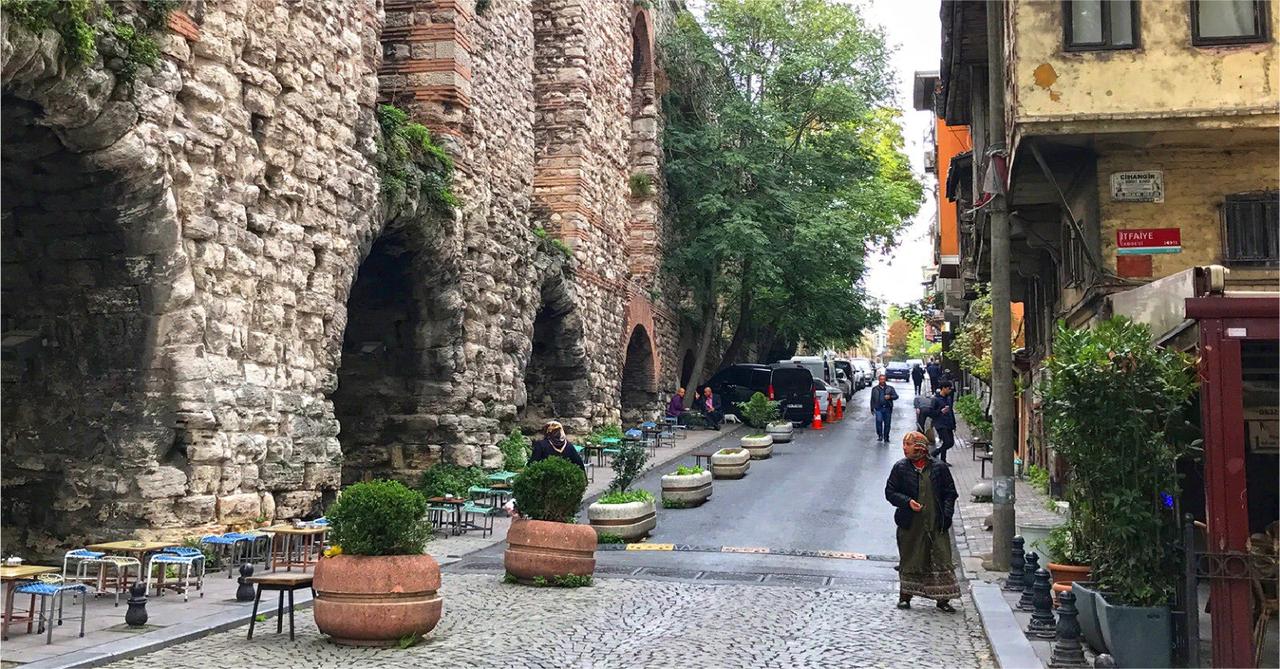
Istanbul has long been famous for its Ottoman heritage. The streets are full of magnificent mosques and elaborate palaces, while the Grand Bazaar is packed with food, color, and noise.
Yet smaller pockets of the city, like Kadinlar Pazari (Women’s Bazaar), in Fatih, where the city’s dramatic historical past combines with its restless present, have a lot more to offer.
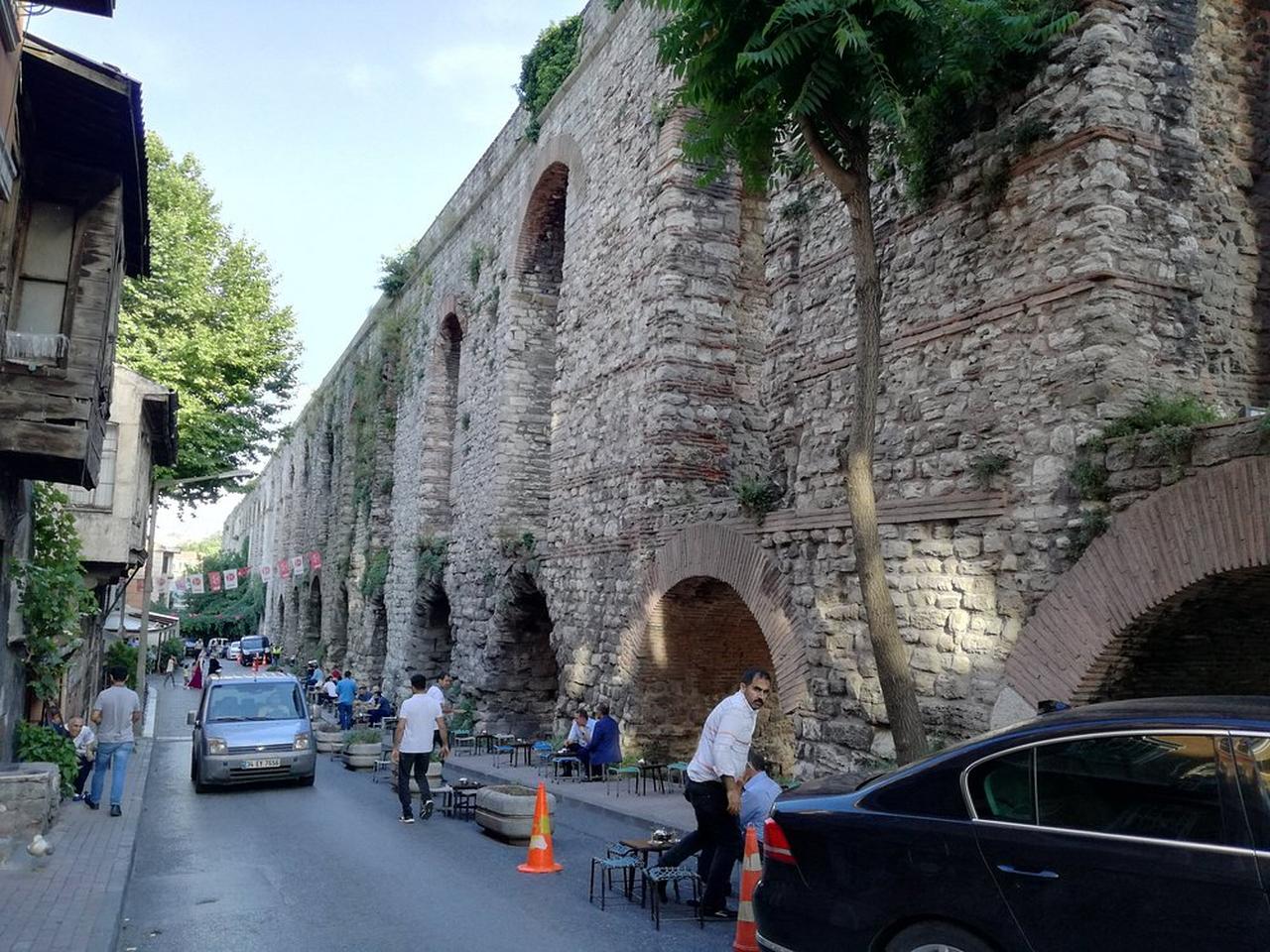
Set under the arches of the Valens Aqueduct, dating back to the fourth century A.D., the sights that await visitors to the Women’s Bazaar are as varied as the stories behind its name.
According to some, this is where female slaves were sold during the Ottoman reign. Slave markets were also known as 'Avrat Pazari,' meaning the women’s bazaar or market.
This name initially referred to markets established for women living in villages to sell the products they grew and made to an all-female clientele who used to shop there because it was thought to be a safe place for women to visit.
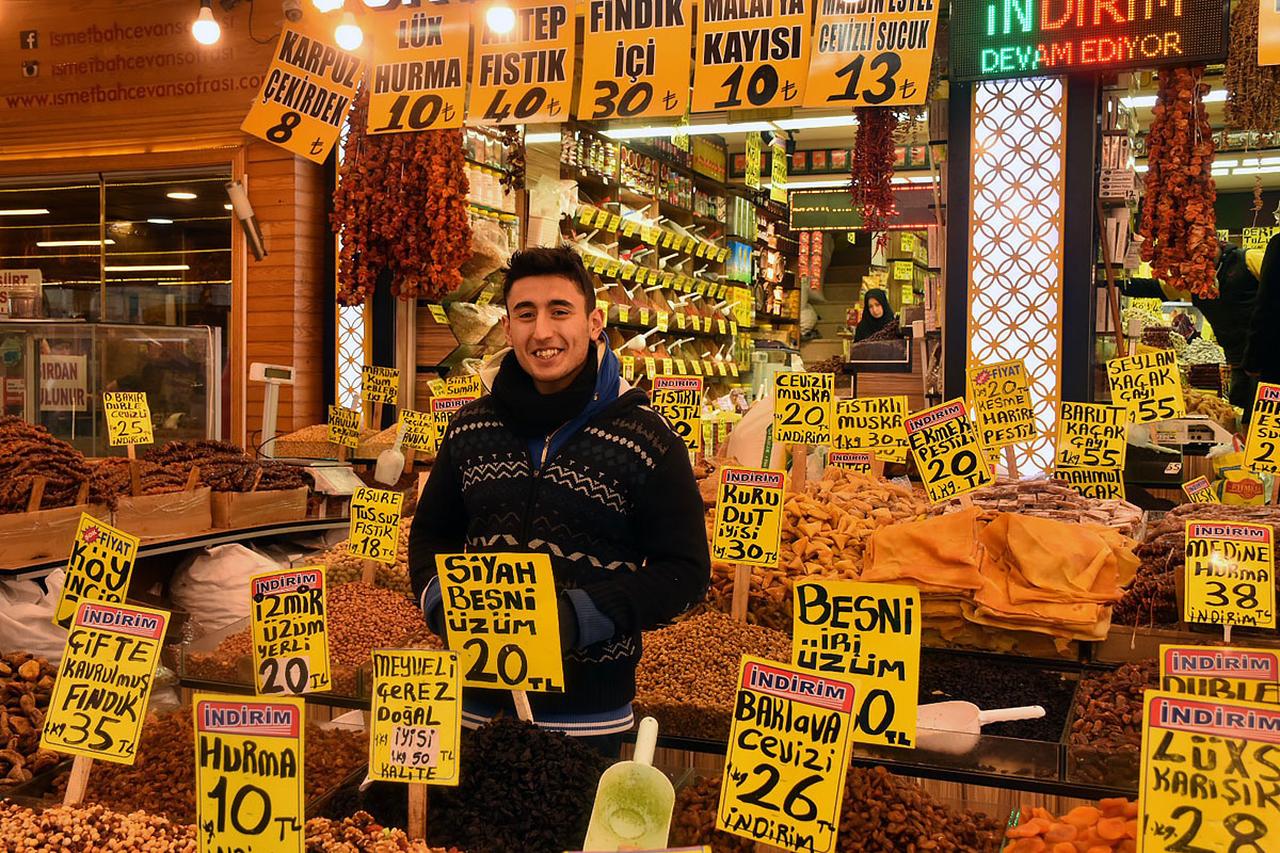
A third and lesser-known version involves the Istanbul fruit and vegetable trade. Long ago, wealthy city residents bought their produce in Eminonu, down by the water near the famous Misir Carsisi, or Spice Bazaar. Anything left over was collected by poor women and brought to a spot close to the present location to be sold for whatever they could get.
They eventually moved to Itfaiye Sokak, Fire Brigade Street, and over time it was known as the Women’s Bazaar due to the number of stalls and shops run by women.
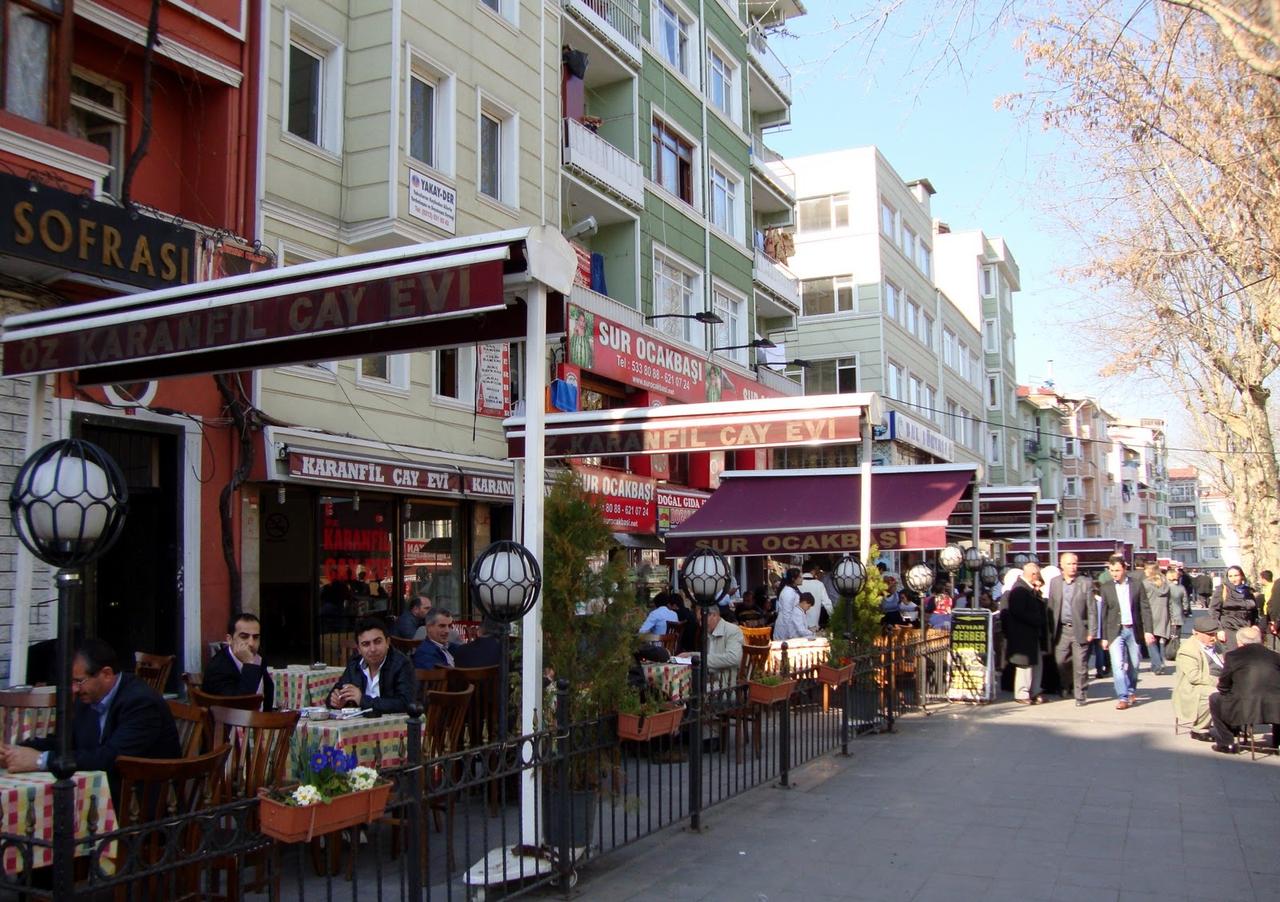
Whatever the truth may be, today it's mostly men who run the many shops and restaurants lining the street.
The majority of them come from Siirt in southeast Türkiye, having arrived with the wave of migrants who came to Istanbul in the 1990s and again in the early 2000s.
For them, the Women’s Bazaar became a home away from home, a place to meet and catch up on news from family and friends and enjoy regional delicacies.
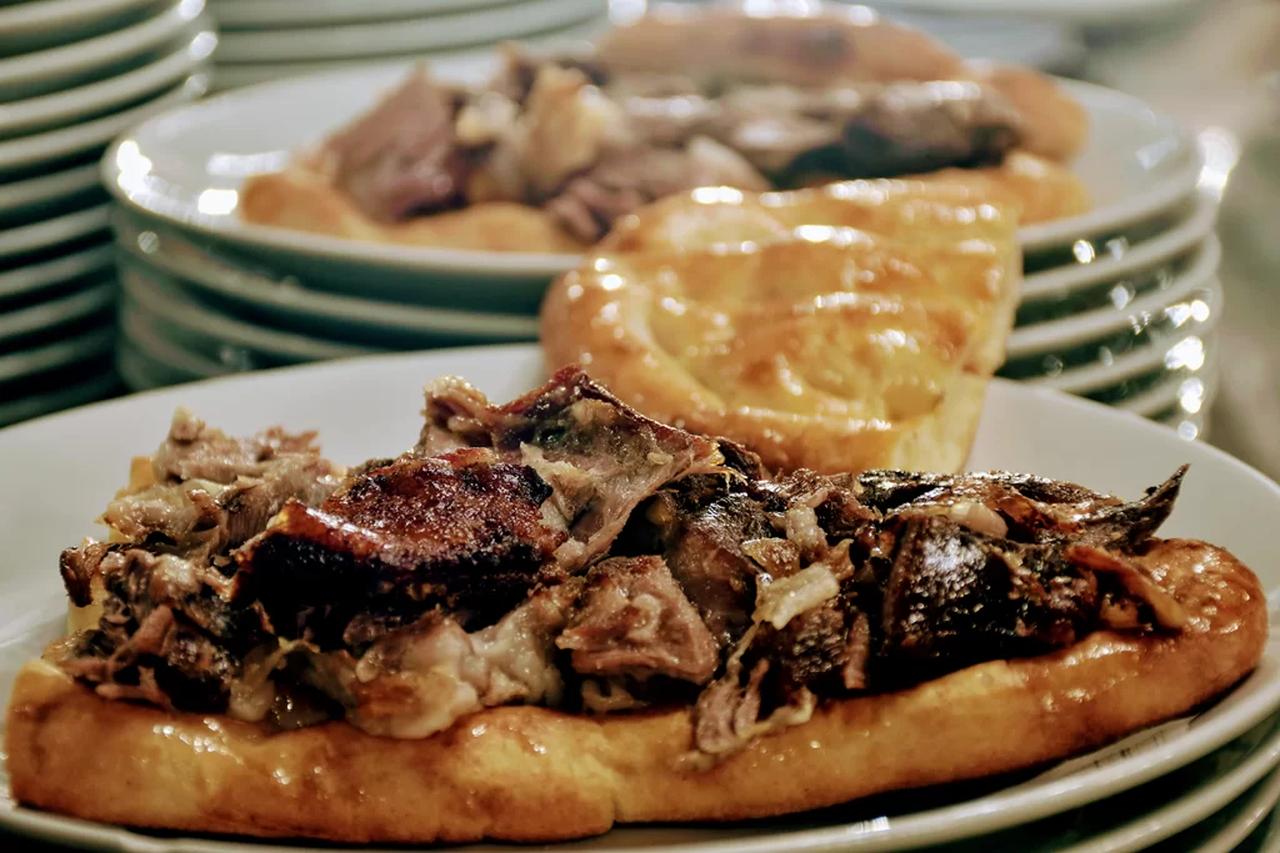
The best way to prepare for a visit to the bazaar is to go hungry. Kadinlar Pazari is famous for Buryan Kebab, lamb slow-cooked in a tandir firini, a tandoor oven, until the velvety meat slides off the bone. You’ll find it in the dozens of restaurants along Itfaiye and adjacent streets.
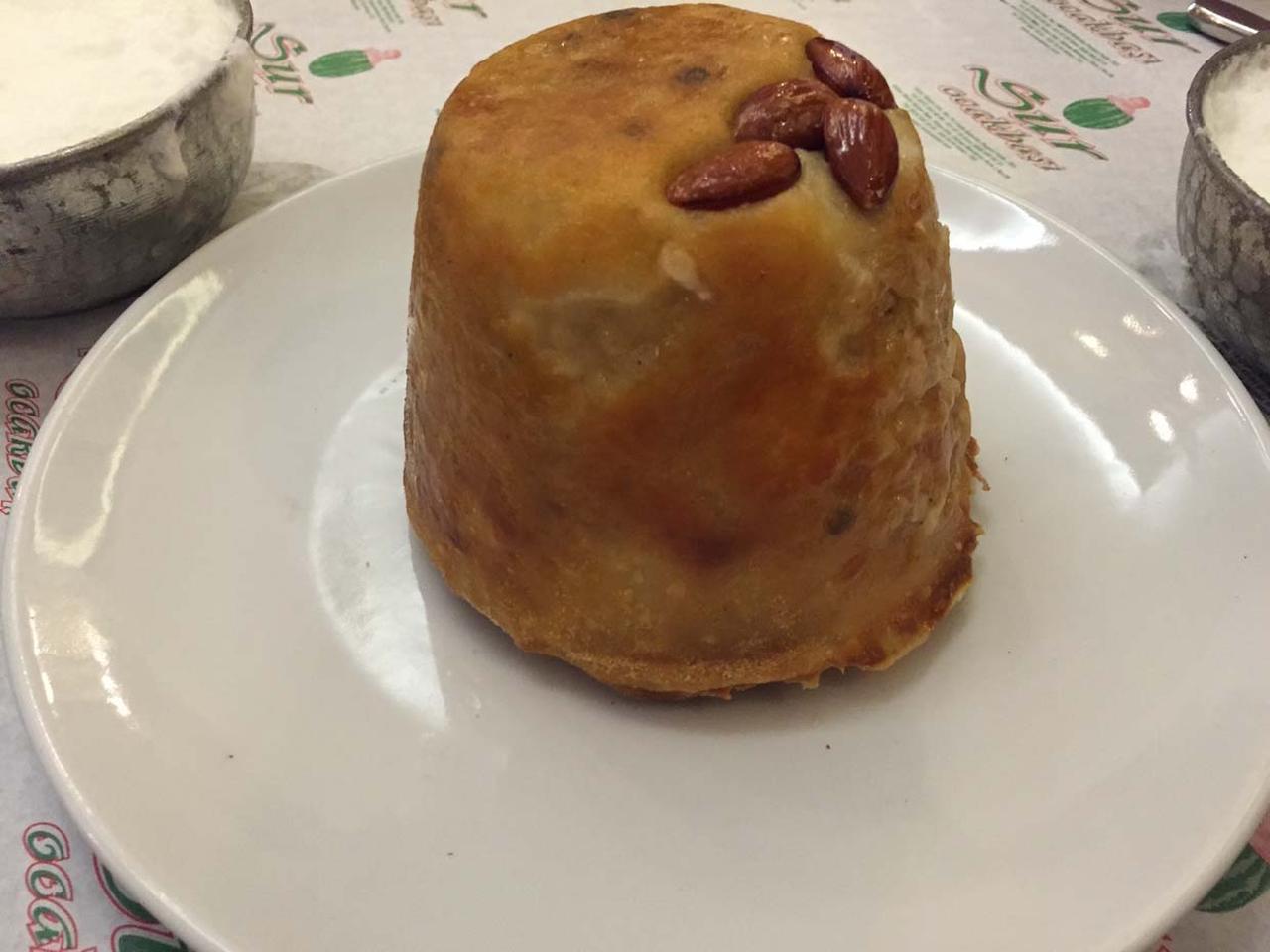
Buryan goes brilliantly with fresh Coban Salata, cucumber and tomato Shepherd’s Salad, and Perde Pilav, buttery rice cooked with chicken, pine nuts, almonds, and currants, encased in a thin crisp dough. A copper cup full of freshly made frothing ayran, Türkiye’s salty yogurt drink, is a common fixture.
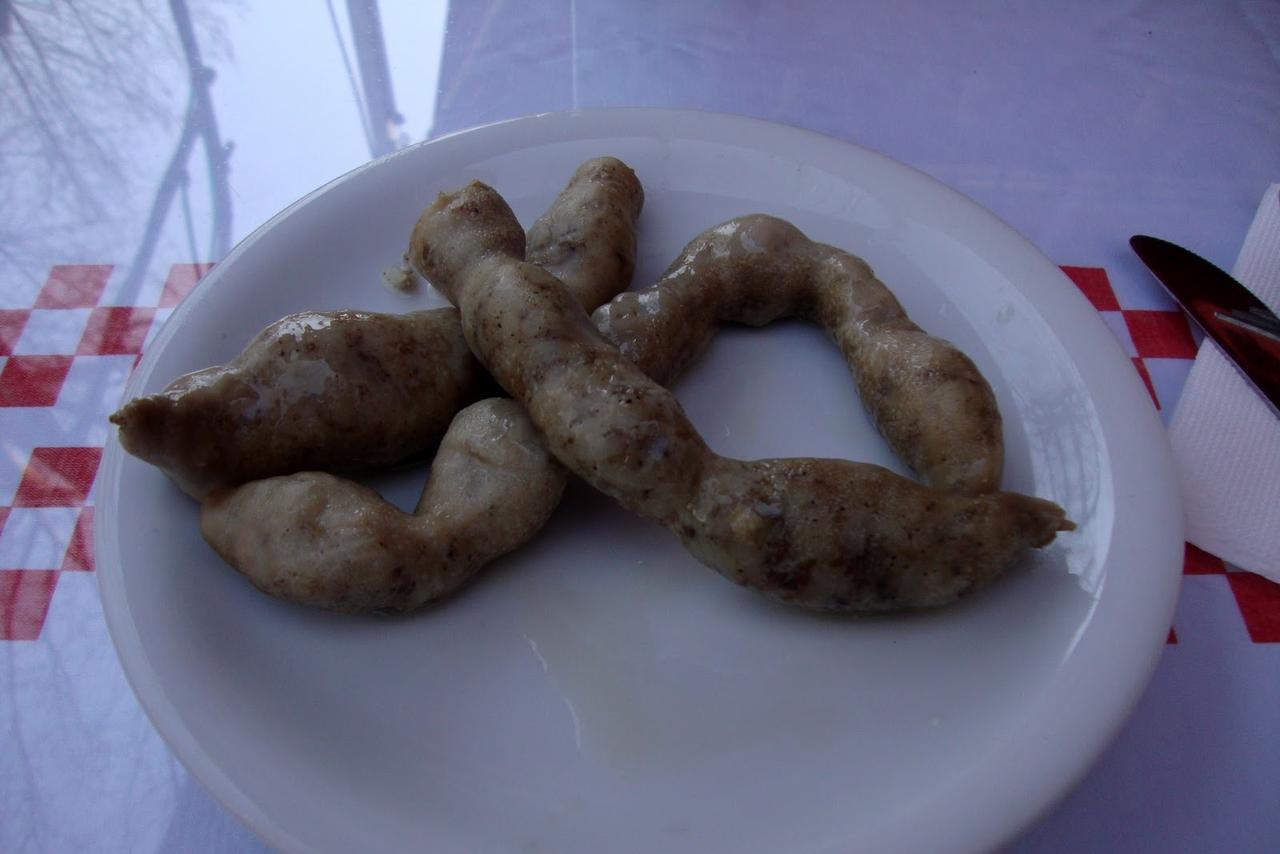
Sakatat, offal, is a staple in every menu here. Mumbar, or stuffed intestines, is especially popular, though it’s not for everyone.
Although it’s tempting to eat your fill, leave some time to marvel at the surroundings and room in your stomach to try the delectable edibles on display.
There are dried apricots, endless varieties of sultanas, raisins and currants, nuts in the shell, cheese studded with wild herbs, and bowls full of honey so pure that spoons stay afloat on the surface.
Pick up some pestil, flattened strips of dried fruit made from grapes, rosewater, saffron, pomegranate, or other exotic ingredients, and get lost in the range of unusual herbs and spices, both aromatic and fiery.
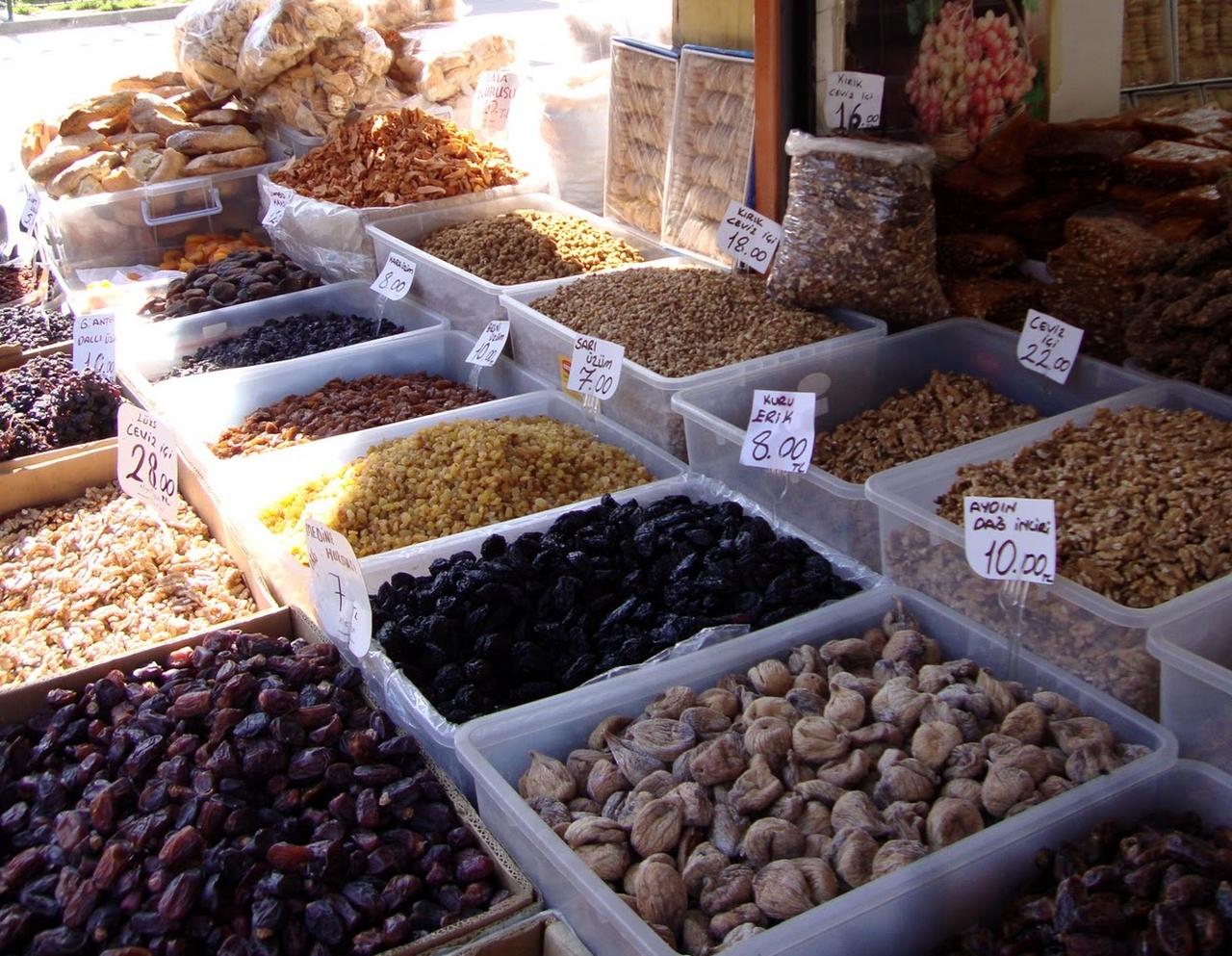
Sounds incredibly healthy, doesn’t it?
Well, that’s if you can resist the mountains of wickedly good sweet treats. Choosing from the towers of compressed dried fruits and mouthwatering gelatinous pastes rolled into logs and covered in desiccated coconut is a difficult task, but don’t despair; they’re more than happy for you to try before you buy.
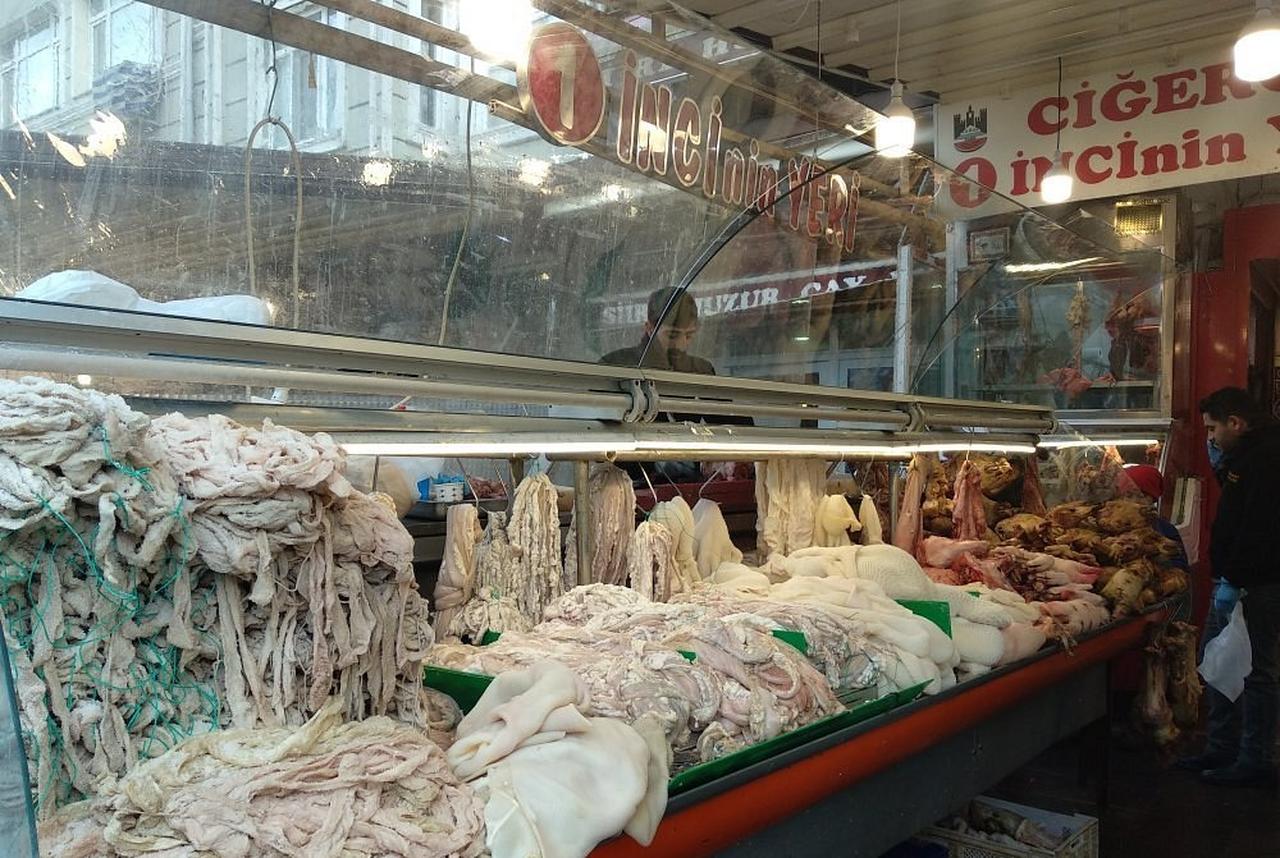
If you’re a vegetarian or the tiniest bit squeamish, be aware that there are a lot of kaspas on the street as well. Along with standard cuts of meat, they also sell a lot of animal parts you don’t see at your friendly butcher’s back home.
In the sakatat dukkani, creatively arranged garlands of washed intestines festoon the shop windows, and barrels of cleaned tripe line the pavements. Neatly stacked upside-down sheep's heads, complete with beady eyes and rows of teeth, line the counters. So much care has gone into arranging everything—the shopfronts look like works of art. Well, almost!

When you’re done with food, bask in history and steam at Zeyrek Cinili Hammam or head for Zeyrek Camii. Built by the famous architect Mimar Sinan for Hayreddin Barbarossa, a Grand Admiral of the Ottoman Army, the Zeyrek Turkish bathhouse is nearly 500 years old and offers a range of luxurious treatments.
The complex includes a museum documenting the structure’s painstaking 13-year restoration and the history of hammam traditions, plus an exhibition space in a formerly hidden cistern.
In dark underground passages, contemporary artworks hang side-by-side with intricate and delicate wall etchings of galleons, thought to have been created by Barbarossa’s galley slaves in the 16th century.
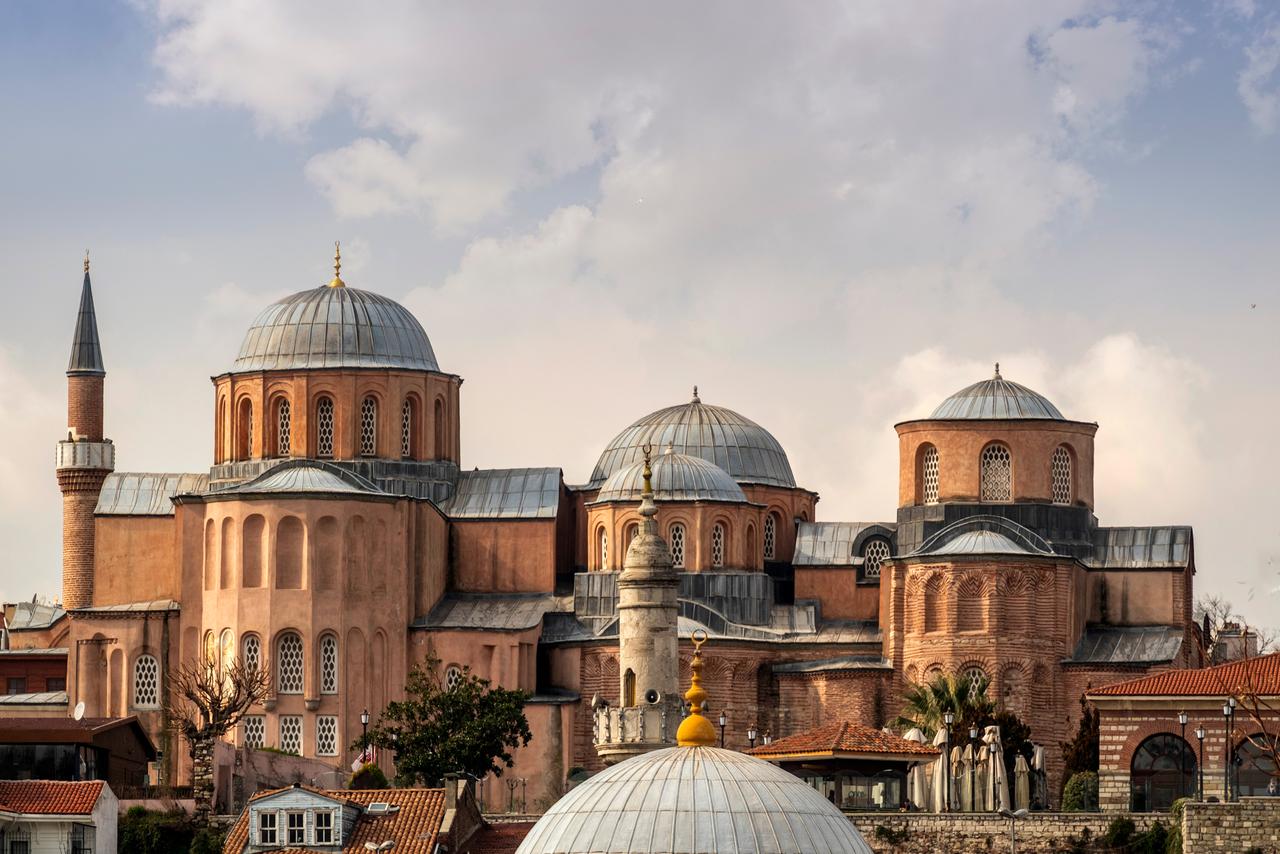
Zeyrek Mosque is an equally extraordinary structure. Formerly known as the Pantocrator Monastery Church in honor of its namesake, St. Saviour Pantocrator, Christ the Almighty, the mosque is a composite structure comprised of two Eastern Orthodox churches with a chapel in the middle.
The monastery was founded by Byzantine Empress Eirene sometime before she died in 1124. Afterward, her husband, John Comnenus, decided to build another church a few meters away and later had the two connected with a chapel.
Inside, you can spot where Byzantine meets Ottoman in the minbar made from repurposed Byzantine sculptures and architectural features from the earlier churches.
Wrap up your day with a glass of freshly brewed tea as you enjoy panoramic views over the Golden Horn in the adjacent tea gardens.